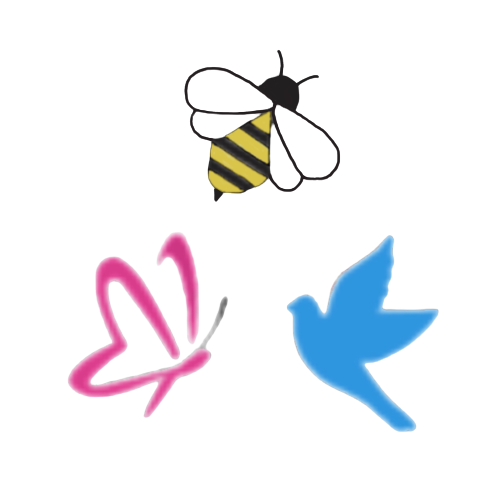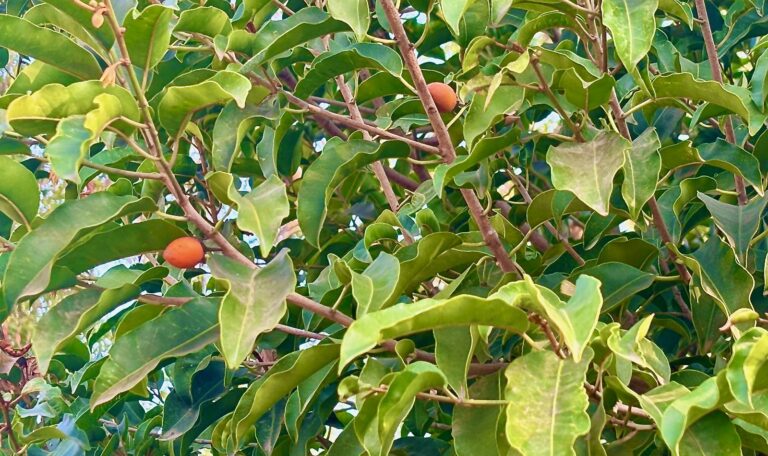Botanical: Mimusops elengi L.| Hindi: मौलसिरी | Marathi: बकुळ | English: Spanish cherry, Bulletwood tree
About
The Bakul tree, Mimusops elengi, is an evergreen native to Southeast Asia, known for its fragrant, waxy flowers. Standing at 15-25 meters tall, it boasts glossy, leathery leaves and small, orange fruits. The tree’s bark is greyish-brown, creating a visually striking contrast with its vibrant green foliage. The Bakul is revered for its ornamental value, often gracing gardens and temple premises.Interesting Facts

Medicinal Uses: Bakul has several Ayurvedic properties and is known for its efficacy in treating various ailments. It is considered specially beneficial for dental and digestive issues. It’s leaves, fruit, bark and flowers are used in medicines.
- Decoction of bark is prepared and as used as mouth wash. Bark powder is applied for toothache. It’s twigs are used for teeth cleaning. Unripe fruits are used as masticatory to strengthen loose teeth.
- The powder of dried flower is eaten as a brain tonic. It’s also used as a snuff to treat headaches.
- The fruit pulp is known to improve fertility in women. For centuries expecting mothers have been treated with Bakul as it has chemicals that are great for women. In fact, expecting mothers are given measured doses to promote delivery. This is one of the finest bakul tree uses.
- Bakul is a very good diuretic. In ayurveda, the bark extracts are given to patients to promote urination.
- In the old days, Bakul was extensively used to treat bites from snakes, scorpions, and insects.

Culture and Tradition: Revered in Hindu culture, Bakul is associated with the god of love, Kamadeva. Its fragrant flowers symbolize purity and are used in religious ceremonies and rituals. The tree’s presence near temples and in traditional landscapes signifies divine beauty and spirituality, contributing to the cultural tapestry of many communities.
- According to Vamana purana the flowers are used in worshipping lord Vishnu. The seeds are offered to Lord Shiva.
- Similar to Parijaat, it’s flowers can be collected from ground and offered in worship.
- Bakul is a favorite of writers and poets. From Kalidasa’s ancient magnum opus “Meghadut”to modern day writer Sudha Murthy in his book “Gently falls the Bakula”.
- Bakul’s flowers retain fragrance even after drying and used to make garlands and for stuffing in pillows .

Environmental Impact: The Bakul tree plays a crucial role in promoting environmental well-being. Its dense foliage offers shade and habitat for various bird species, contributing to biodiversity, it’s leaves can be used as foddder. The tree’s ability to thrive in diverse soil conditions and resist pests makes it a hardy species with potential for afforestation efforts. Additionally, Bakul’s carbon sequestration capabilities make it an ally in mitigating the impacts of climate change on local ecosystems. Bakul’s fragrant flowers attract butterflies and bees while several birds are attracted by it’s edible berries.

